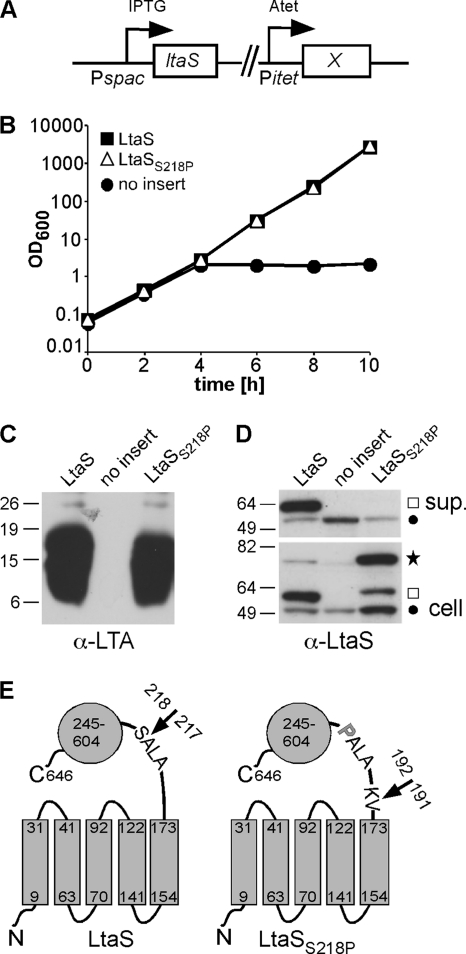Fig. 3.
LtaSS218P variant with mutated cleavage site shows reduced processing but retains activity. (A) S. aureus strains used for complementation analysis contained the chromosomal copy of the ltaS gene under IPTG-inducible spac promoter control, and the LtaS variant under investigation (X) was expressed from an Atet-inducible promoter at an ectopic chromosomal location. (B) Bacterial growth curves. Expression of WT LtaS and the LtaSS218P variant was induced after removal of IPTG by the addition of Atet. As a negative control, an S. aureus strain containing the empty pitet vector (no insert) was used, and growth of all cultures was monitored by determining OD600 readings at the indicated time points. Cultures were back diluted 1:100 in fresh medium at the 4-h time point to maintain cultures in the logarithmic growth phase. (C) Detection of LTA by Western blotting. At the 4-h time point, 1-ml culture aliquots were removed and samples prepared and analyzed by Western blotting. A mouse monoclonal anti-LTA antibody (clone 55; Hycult Biotechnology) was used for the detection of LTA in the cell-associated fraction. (D) Detection of LtaS by Western blotting. At the 4-h time point, 1-ml culture samples were removed and supernatant (sup.) and whole-cell (cell) samples prepared as described in the legend to Fig. 1C. A star indicates the full-length LtaS protein, a square the cleaved eLtaS protein, and a filled circle the unspecific Sbi protein band. (E) Schematic representation of WT LtaS and the LtaSS218P variant. Numbers refer to amino acid positions, and arrows indicate main cleavage sites identified by mass spectrometry analysis. The proline substitution in the LtaSS218P mutant is shown as a bold gray letter. S. aureus strains ANG513, ANG514, and ANG1246 were used for this experiment.

